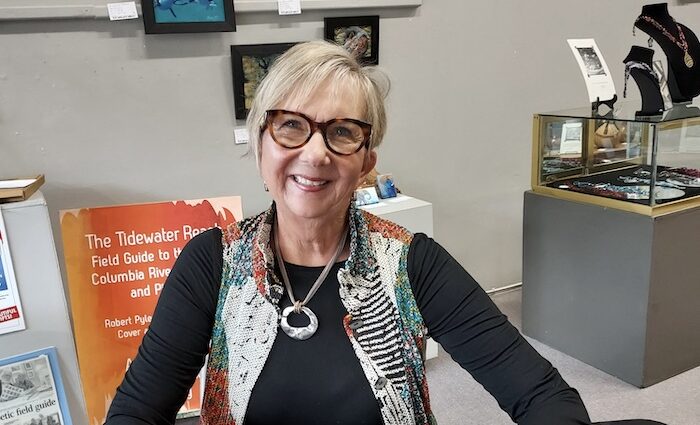The biggest emotional challenge of being a writer has to do with the uncertainty of the effect of my work on an unknown reader.
As a physician, I had regular feedback, sometimes immediately, from my patients. It was gratifying to know I had helped someone.
As a writer, the first challenge is writing the book (I’m currently finishing numbers 8 and 9) which is relatively easy compared to getting those books in front of the eyes of readers.
That challenge involves creating ads that appeal to those readers, and hoping they’ll opt to buy my book!
I Can Learn Whatever I Need to be Successful
I don’t experience “writer’s block” per se. My brain is always working on a plot, or a scene, or deciding who the bad guy is at the end. I have a good friend who brainstorms with me when I’m not sure what angle to take or need new ideas from someone else’s experience.
My volunteer schedule can get in the way, but I keep my promises to myself to sit down and write when I must meet a deadline, such as submitting a draft to my editor.
I have several coping mechanisms.
The first is the reminder that I can learn whatever I need to be successful, whether it’s improving my writing skill, learning to use BookBrush or Canva to create great images, or writing good ad copy.
The second is reminding myself that I am a “baby” author and still learning the craft. I just haven’t been discovered yet!
The third is a monthly meeting via zoom with a small group of fellow authors who are in various stages of their writing craft. One is already making a living at it, while another has yet to publish that first book.
We like each other, share tidbits of helpful information, and generally hold each other’s hands. It’s my favorite day of the month!
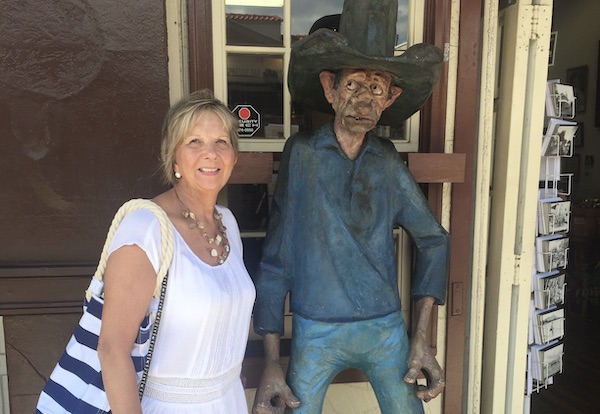
I’m a Proponent of Eating Three Times a Day and Not Overeating
I don’t have any physical challenges to being a writer. I am in excellent health which I attribute partially to good genes and a lifetime of eating healthily most of the time and some kind of regular physical activity.
I’m a proponent of eating three times a day, and not overeating. I swear I could be happy with a diet of cheese, fresh bread, fruit, vegetables and wine!
When I was younger, I jogged and played tennis. Over the years I’ve switched to golf, which I never thought I’d enjoy and now love, and tap dancing, which I started at age 58, just for fun.
My local group enjoys participating in cabarets and doing performances for events such as reunions and birthday parties. I’ve never been a “gym rat” and prefer to get my exercise in more fun ways. My husband has even agreed to take ballroom dance classes which I’ve always wanted to do!
Exercise Doesn’t Have to Mean Running or Weight Lifting
Even while I practiced medicine for those 37 years, I was physically active. I was practicing what I preached. That seems ingrained into my being.
When my daughter was young, my husband fixed dinner (spaghetti, always) on Monday nights so I could play tennis. Now I manage to do something–walking around the lake 2 blocks away, tap dancing, or going to the gym for strength-training–three days a week, sometimes four, depending on the week. It’s important that we do something we enjoy, or it won’t happen!
I frequently reminded my patients that exercise doesn’t have to mean calisthenics, running, or weight lifting. Moving our bodies in any form of activity is healthy. Zumba, yoga, golf, walking, gardening or working in the yard are all forms of “exercise”–just do something!
Getting away from the computer allows me to let my brain wander and I often come up with an idea for a scene or a plot twist while I am doing something else. Our unconscious brains work on those loose ends while our conscious brain is analyzing the best golf shot or counting steps.
The brain is like a search engine, if you will, retrieving information stored in those neurons and sending it to your conscious brain. Not as fast as Google, maybe, but still a remarkable ability.
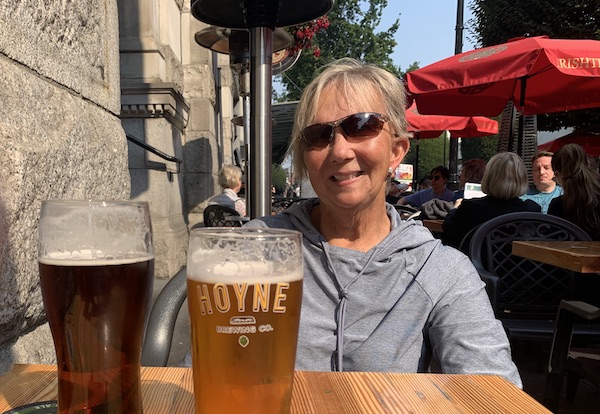
Writers Have to Accept the Cost of Doing Business
Marketing is every (independent) writer’s bane!
I’ve done various courses through the gurus such as David Gaughran, Bryan Cohen, David Chesson, and Matthew Holmes. I’m currently starting Facebook Ads testing using a method recommended by Matthew Holmes.
The goal is to identify which image, text, and headline is most appealing to readers. This is my first time to experiment with this kind of trial. Two fellow author friends have done this with excellent results.
My stumbling block is the mental resistance to spending the money, but it’s necessary to reach readers. It’s the old “cost of doing business” reality. I have a lot of amazing reviews but to sell the books, I have to get the clicks.
How Self-Publishing Opened the Doors for Me
I am a retired physician, having practiced Internal Medicine for 37 years.
I’ve enjoyed writing in various venues over the years, including publishing several clinical articles, four non-clinical “medical experience” stories, and a few articles in other publications.
When I was working full-time in the clinic as well as spending 8 hours weekly in administrative work, I didn’t have the energy to create full-length books, nor did I actually consider it. I had written my first Julia Fairchild mystery about 40 years ago after an experience in St. Maarten but in those days, I would have had to find an agent to get to first base. That seemed daunting and I wasn’t sure my book was even good enough.
Then in 2018 I met a young man who had worked for Kindle in the early days, and we started chatting. The next thing I knew, I was creating a cover, having my novel formatted, and hitting the “publish” button. It was an awesome feeling. And I started writing a second book, and a third, and have now published six books in the series. I don’t want to stop!
The Three Most Important Things in Self-Publishing
I’m a self-published author because the process of getting an agent was time-consuming and scary. I did try, but after a few dozen rejection letters, and with the acceptance of the independent author these days, I made the conscious decision to self-publish.
I believe the three most important things in self-publishing are:
1. Have your book edited professionally.
I didn’t know about such people when I published my first novel. There were so many typos and errors that I was ashamed when I read it later through the editing lens. It was still a fun book to read, but painful to acknowledge all those errors.
It is now much improved! Professional editing is vital for identifying loose ends and inconsistencies, making suggestions for improving flow, and so forth. I found my amazing editor through Reedsy.com but there are other resources out there.
2. Have a great cover appropriate to your genre.
Here again, as a novice author, not knowing any better, my artist friend and I created that first cover using the KDP program. It was serviceable, but it looked amateurish, in retrospect.
I later had a professionally-made cover created, although I don’t really like it now, and am redoing it again. That cover needs to look like the genre in which you write. Or the potential reader will gloss right over it.
The pros recommend that you fit in with the covers of the top 100 selling books in that genre in order to get noticed at all.
3. Learning how to create ads, both Amazon and Facebook.
You need to reach readers and that’s where you’ll get that exposure. I feel pretty clever at creating the ads, but am still reluctant to spend the kind of money (Facebook is the money gobbler) that some of my author friends do.
I think growing up in a frugal family plays a role, even though I am financially able to support this necessary cost of doing business.
You’d Think Being Retired Would Make It Easy to Find Time to Write
One would think that being retired would make it easy to make the time to sit down and write. I tend to be a “doer” and am on a couple of local boards, sing in the church choir and a community choir, dance two days a week, and volunteer at our Free Medical Clinic, among other things.
I have to schedule writing time, or it wouldn’t happen. Some days I can think of seven other things to do before I sit down and create.
I’m a master of procrastination and sometimes I have to remind myself of how good I will feel when I complete a task, whether it’s writing or making a dreaded phone call (those fund-raising calls). That works most of the time.
Deadlines are good too. I always meet a deadline!
Advice for a Young Writer: Learn All You Can!
I was invited to attend a high school class on creative writing and was intrigued that one of these young people was already writing a fantasy novel in a future world and asked questions about publishing. And she was only 16!
My answer for a young person who wants to pursue such a career would be to learn all they can about genres, tropes, character development, plot setting and so forth in the meantime. Take some classes at a local college. Read, read, read. And to have a job that supports them while they develop into a writer.
It may take years to be able to transition to writing as the sole source of income.
* * *
PJ Peterson began writing mysteries once she retired from her career as a board-certified internist. It was a natural choice considering that she read all the Nancy Drew and Trixie Belden books when she was younger, graduating to Agatha Christie and the other major mystery authors.
Her first series, Julia Fairchild Mysteries, features Julia Fairchild, MD, a smart and curious young internist who is much braver than the author (who has yet to try sky-diving).
Her novels include a touch of humor with her sidekick sister Carly providing most of that. And with her medical background, she sprinkles in something related to health or disease whenever it fits the story. After all, a doctor is just a detective wearing a white coat.
Her writing has been described as “Jessica Fletcheresque,” à la Murder She Wrote.
For more on PJ and her work, please see her website and Amazon author page, and connect with her on Facebook.
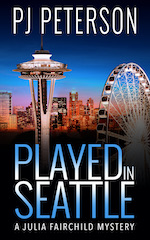 Played in Seattle:
Played in Seattle:
An unidentified man clutches a scrap of paper…
A nuclear engineering professor flirts with danger in more ways than one…
Email messages appear that seem to be coming from a naval program that was abandoned in the 60s…
Julia Fairchild and her sister Carly stumble onto a near-dead John Doe while enjoying a week in Seattle. Despite Julia’s resolve to avoid playing detective while on vacation, she is drawn into a web of mysterious emails and modern-day subterfuge.
After she runs into an old friend from her college days, she becomes an unsuspecting pivotal player in an undercover investigation. Fueled by her innate curiosity and sense of integrity, she searches for the answers to her questions.
And learns more than she bargained for.
Available at Amazon.
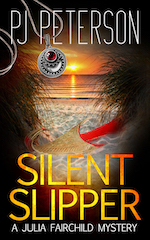 Silent Slipper:
Silent Slipper:
A dead woman on a beach has no ID – but a beautiful necklace and a silver slipper are found lying nearby in the sand…
Julia Fairchild, MD, and her sister Carly go on a carefree vacation in the British Virgin Islands, but soon get pulled into the mystery of a murdered Jane Doe. The young woman’s body lies on a huge rock on an isolated beach. No strangers to crime, the sisters offer their help and expertise to the baffled local investigators.
Upon closer examination of the mystifying case, they encounter endless twists and dead ends.The evidence leads them to the set of a pirate movie being filmed nearby, but how does a corpse connect to a bunch of pretend buccaneers?
Can the sisters unravel the mystery in time to nail a killer, or will they be the next cadavers to turn up on the sand?
If you love stories by Laura Child, Kelly Oliver, and Louise Penny, you’ll flip for this incredible whodunit!
Available on Amazon.

